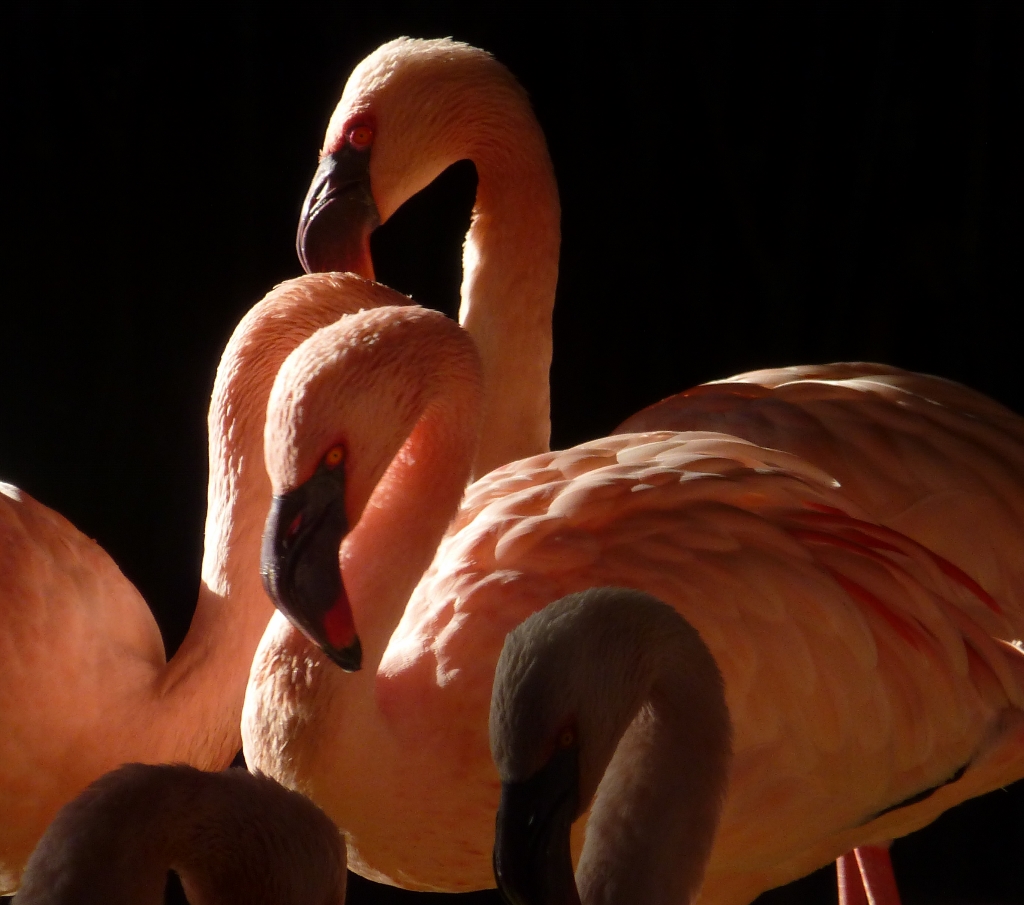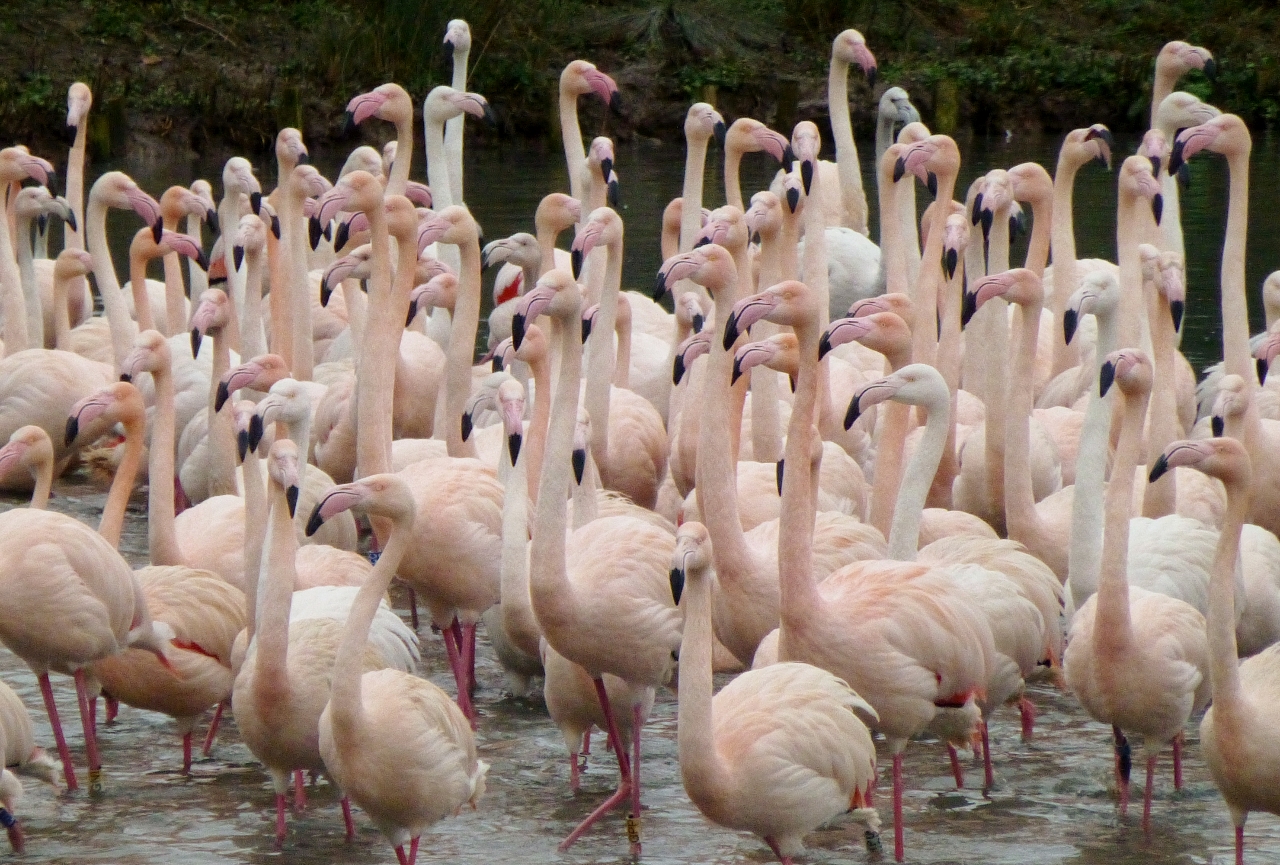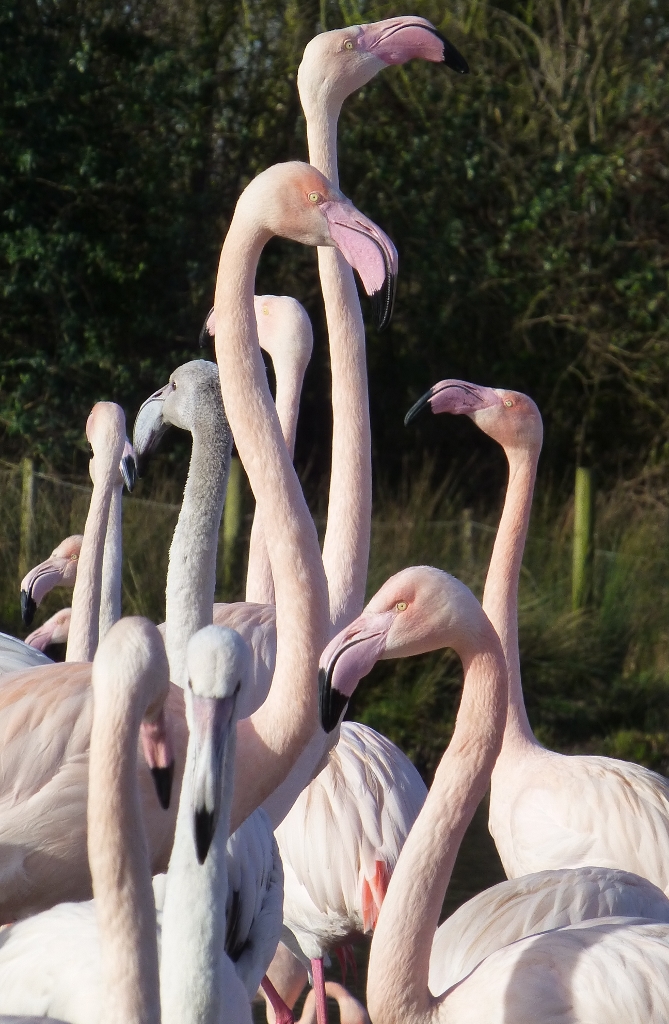Birds, romance and being in the pink
The month of Valentine's Day rolls round again, and love is in the air for many in the natural world. For the flamingos, this means sprucing up their feathers, getting on their dance moves and starting some serious flirting. Whilst the birds have been shut away for the past couple of weeks, this hasn't dampened down any signs of romance, and there is a lot of courtship behaviour going on currently.
 A riot of colour in the lesser flamingo flock.
A riot of colour in the lesser flamingo flock.
So, can I write a scientific post about flamingos and about Valentine's Day? Well, yes I can :-)
New research, published at the end of last year identified that during flamingo courtship birds can perform a wide range of sequences when dancing. As there are a set number of postures (wing salute, head flag, twist preen and so on) that make up the dance, a flamingo has the option of changing what moves to perform, and in what order, to add variety to its display. I've talked about these different behaviours in a previous post (http://www.wwt.org.uk/news/all-news/2014/03/wwt-slimbridge-diaries/wwt-slimbridge-diaries-flamingo-diary/flamingo-breeding-activity-a-few-insights-1/) if you want to have a go at spotting them for yourself.
Scientists studying the display of wild greater flamingos in the Mediterranean have discovered that there are no less than 136 potential combinations of dance moves that a flamingo could perform during courtship. They change their routine to give the best impression to any potential mate. Clearly, flamingos are no bird brains; but highly complex, organised creatures. For more information on this research, follow the link here: https://www.ncbi.nlm.nih.gov/pmc/articles/PMC5122308/
Some very tall boys. Greater flamingos getting in the mood for dancing.
Because we have large flocks of flamingos at WWT, and they have the room to show off their display, the birds are able to perform a full range of "dancing options" when courting. This adds more support to why it is crucial to house flamingos in large groups. Courtship dancing is clearly very important to them; they can change their courtship display to find a partner if previous moves haven't worked. And they can choose from many, many different routines when dancing. Here at WWT, we enable the flamingo's dancing to work as it is meant to, because the birds have lots of options of who to display to and how to display to them.
 Two's company and three is never a crowd. In fact, the more the merrier to help the courtship display of the flamingo work to its best effect.
Two's company and three is never a crowd. In fact, the more the merrier to help the courtship display of the flamingo work to its best effect.
Whilst this research was published on the greater flamingo, you can see how complex the birds' displays are by looking at any of the flocks at WWT. The short clip below is of the lesser flamingos doing their dancing, and it is relatively straightforward to pick out different moves and positions that are involved. See how the flamingos start to move and stretch their legs and wings, and gradually the pace picks up, and birds become more and more excited. The need to dance is contagious, and spreads quickly throughout the flock.
When observing courtship display, there is similarity between species and the moves that they do. Here are the greater flamingos at WWT Slimbridge performing their courtship dance, and you can see how the birds have similar wing flashes, and they come together to rush quickly as a tight little group at the end, just like in the lesser flamingo clip. Greater flamingos start their display by head flagging, which didn't happen with the lesser flamingos but the overall end result is the same- the flock gets fired up and ready to nest.
Natural behaviours in natural surroundings. Good animal welfare means lots of breeding potential. In fact, so regular is the courtship dancing at WWT Slimbridge that the wonderful greater flamingo flock was used in the 2015 BBC series "Animals in Love", highlighting the efforts flamingos go to when starting to breed. A clip of the birds in this show can be found on the BBC Earth YouTube channel, below.
I hope I've shown you that flamingos put a lot of effort into impressing their own Valentine. If you enjoy watching the birds at WWT and reading about them here, you can get more actively involved by adopting a flamingo of your own (http://adoption.wwt.org.uk/adopt/flamingo/). I can't promise it will dance just for you, but I'm sure your support will be welcomed nonetheless :-)




